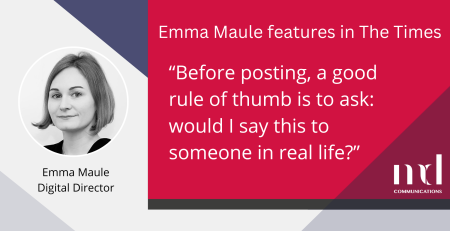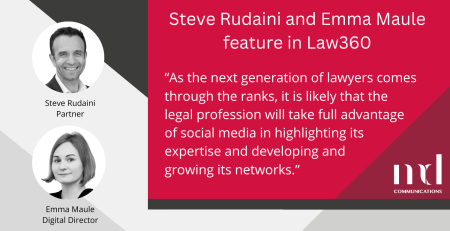If you have a Twitter account, you’ll know that ‘cracking’ this micro-blogging platform isn’t as easy as you might think. The time between joy at gaining a small flurry of followers and realising that @KimKardashian has 59 million is short.
And then there is the disappointment at, well, the quality of the ‘discourse’. As Twitter started, the US Library of Congress announced it would preserve a record of every tweet, as it anticipated this would be a record of the greatest human conversation ever. A giga-ton of racial abuse, kitten-pics and ‘u ok hun?’-s later and that commitment was quietly dropped.
But clearly Twitter does have power, and even people with little or no public profile can become big news through this medium – for good reasons or bad. The legal world has seen two examples in the past few weeks that show how this can happen.
The most recent is barrister Becky Owen (@BeckyBarrister) on 23 November, who complained about court security. ‘Can @CEOof HMCTS tell me why I have been told to “spread your legs please” by security at Bromley Court…?’, she tweeted. An exchange followed, where Owen also got to say: ‘I am wearing a knee length skirt with nude tights. Let me be clear … there are no circumstances in which I will EVER accept an order to spread my legs by a male member of your security staff!’
The security officer was suspended, and the incident gained national media coverage.
Earlier in November there had been an even bigger story. Another barrister Rehana Popal (@Rehana_Popal) took to Twitter to say: ‘Just had a solicitor call to tell me that a case that I had previously been instructed on, which was adjourned administratively due to lack of judges was now re-listed for December. However, the client has said he doesn’t want an Asian female but a white male barrister.’
Coverage that followed included the BBC, Metro, The Times, the Gazette, Legal Cheek – and so it goes on.
In neither case has the barrister seen the number of Twitter followers they have go through the roof, but their voices certainly got heard. I have a few thoughts on why.
- It’s not the number of followers each had that mattered – it’s the fact that they had the right followers. The list included people who would relate to their experience or know a bit about the context in which it happened. Their followers wanted to act by replying and retweeting, and in this way it came to the attention of the media.
- Both use Twitter regularly (check out their accounts). This means their followers expect to hear from them, and it also means that – when faced with wanting to communicate something on the spot, as both did – that they knew how to express themselves clearly. There’s little point in having a bad experience and then joining Twitter to tweet about it in your first tweet.
- Journalists spend time on Twitter looking for stories. In part because this is where some of the action is – but also because they are more stretched than ever, and through social media they can be in lots of places at the same time.
- Their stories are trusted because they read as personal and immediate – they aren’t mediated by some large corporate’s communications and branding operation. Though I would say both have spent time working on the clear communication needed on social media – most people can’t switch on being ‘good’ at this from scratch.
Tweets and stories like this also present a communications challenge for anyone tagged, named or involved – the targets of the tweet. In this very fast-moving situation, they need to know how they respond to such things – who responds, and what is the manner in which they respond.
The power of social media is immense and done right can, even for people who have a relatively small following, have a big impact.
If you want help learning how to get your message across, or planning for how to reply to a situation you are suddenly drawn in to, I hope you’ll get in touch.












